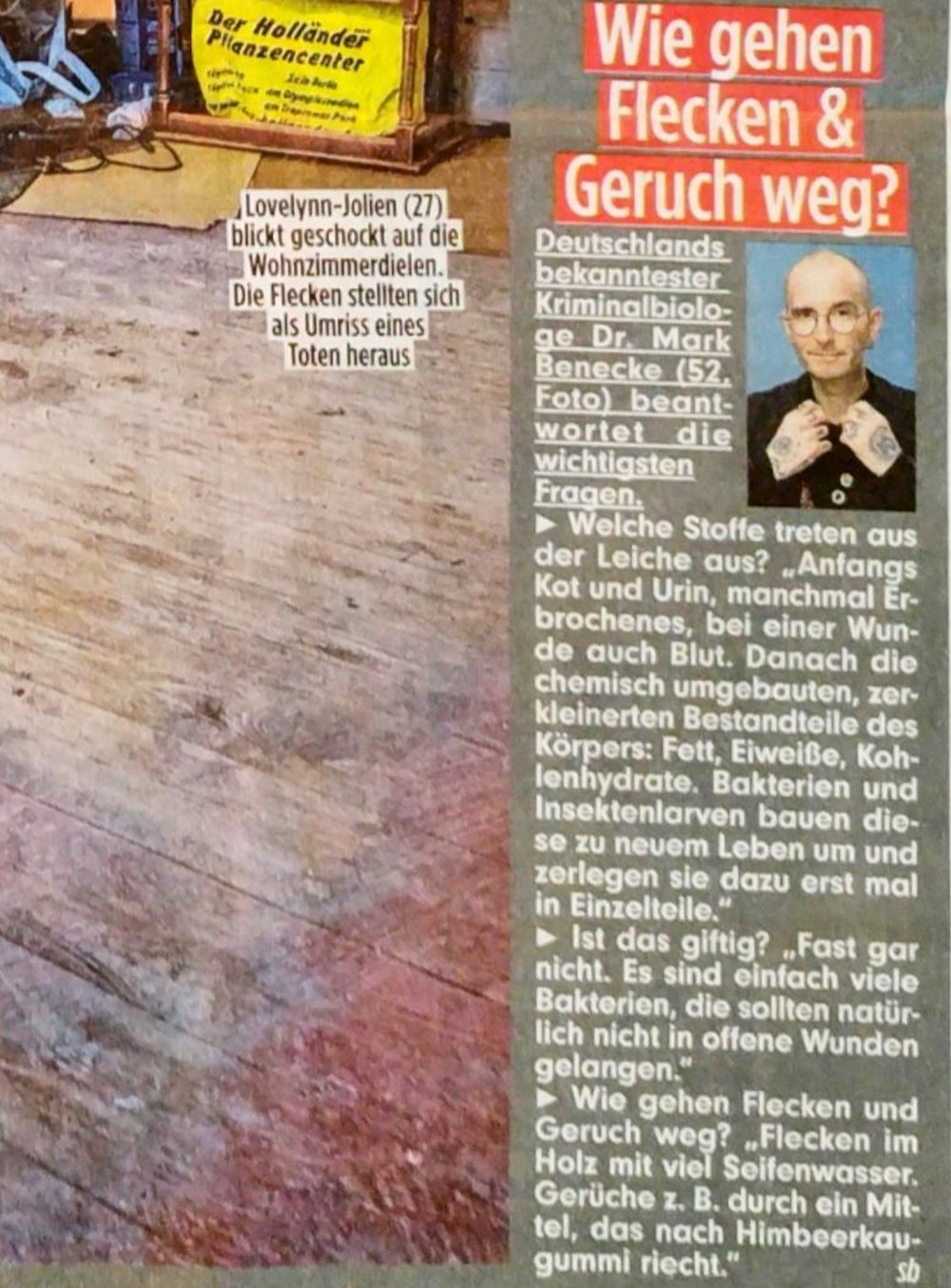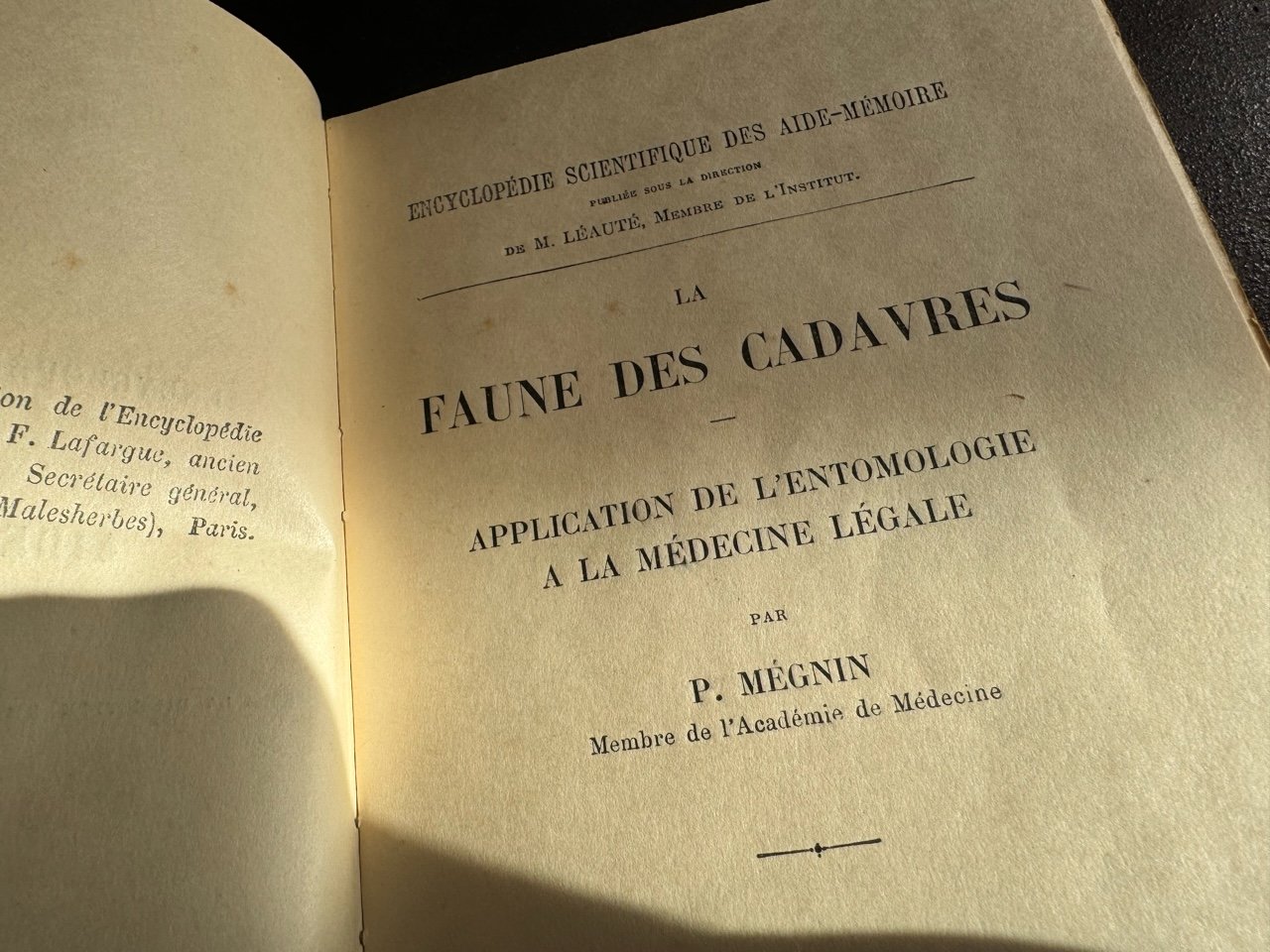Source: Speech at the Meeting of the Italian Union of Zoology (UZI), September 25, 2018, Lecce, Italy
Teresa Bonacci, Mark Benecke, Federica Mendicino, Francesco Carlomagno, Marco Pezzi, Daniel Whitmore, Vannio Vercillo
ABSTRACT Murderers often to try to conceal evidence of their violent crimes. Several cases involving buried corpses have been reported in Italy but studies of insects associated to buried remains are still limited.
A simulation of a case involving a buried human corpse was carried out using pig carcasses. Six pigs weighing 110 kg each were used: five carcasses were buried at a depth of 60 cm and one was left on the surface as control (“S”). In order to evaluate short- and long-term effects of burial on decay and insects succession, four of the five buried carcasses were excavated every 45 days and one of these was used as second control (“B”). Carcass B was then excavated every 10 days over the sampling period until its complete decay. Daily controls on insects presence were performed on carcass S and on the burial surcafes. Air and soil temperature, humidity and rain rates were recorded throughout the sampling period.
Insects observed visiting the carcass S along the decay process were Calliphora spp, Hydrotaea dentipes, Necrodes littoralis, Necrobia spp, Creophilus maxillosus, Dermestes frischii. Diptera such as Calliphora vomitoria and Musca domestica were observed over the burial carcass B one day after the first excavation. At the time of second excavation (10 days later) C. vicina maggots and adults of Philontus sp. were collected inside the ear of carcass B. At the time of eleventh excavation of carcass B, maggots of Lucilia sericata, C. vomitoria, Hydrotaea aenescens, Hydrotaea capensis, Hydrotaea ignava, Muscina prolapsa and Fannia canicularis and adults of C. maxillosus, Hyster cadaverinus, Saprinus semistriatus, D. frischii, Tanatophilus rugosus, Necrobia violacea and Necrobia ruficollis were collected. Since the beginning of the study, larvae of H. aenescens, H. capensis, Muscina stabulans and F. canicularis and adults of Staphylinidae Aleocharinae and Oxytelinae (Platystethus spp), Margarinotus brunneus, S. semistriatus and D. frischii were collected from day 109 to 171 on carcass B.
At each excavation control, no insects on the grave and on other buried carcasses were collected. Comparing the results of buried and exposed carcasses, more species were collected on buried remains in comparison to exposed ones. This experiment provides the first data on insect colonization patterns of buried carcasses in Italy and indicates that burial depth (60 cm) and soil cohesion are relevant factors preventing the access of insects to the buried carcass.









